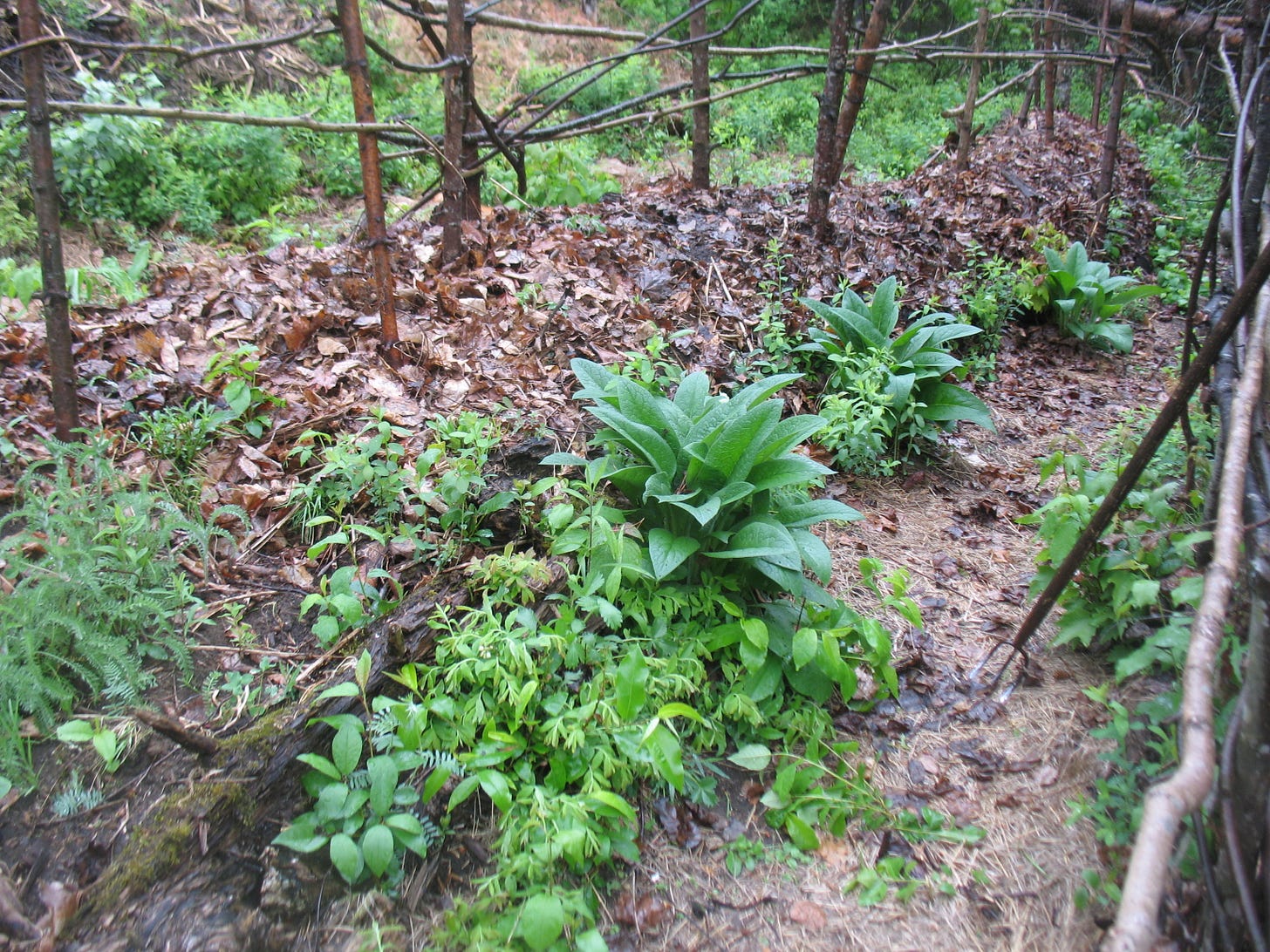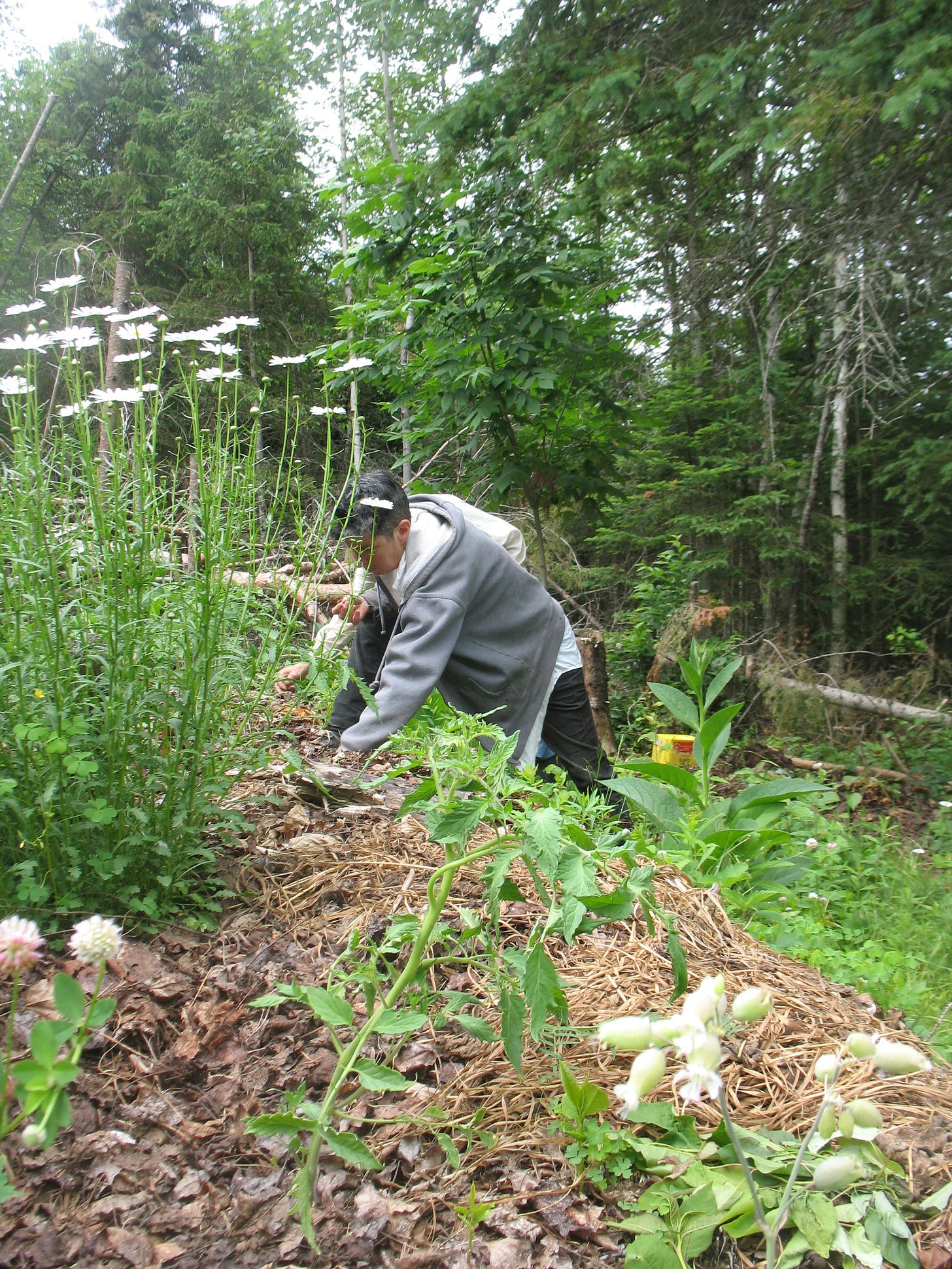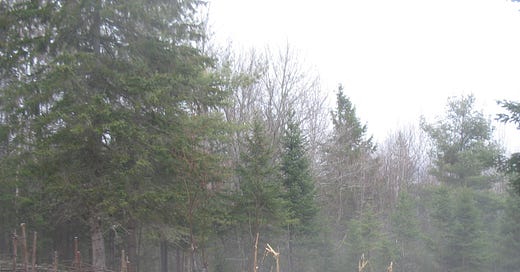Hugelkultur gardens (part 2)
It was during my second gardening season at the cabin in Lake St. Peter, Ontario when I gained a first-hand understanding that hugelkultur gardens dramatically improve with age - like a fine wine or wheel of cheese. By the spring of 2018, much of the woody debris, leaves and compost that I had compiled that first autumn (2016) had turned into a thick layer of humus - the accumulation of which would have taken dozens if not longer to accumulate in a natural forest ecosystem. I had, in fact, sped up time by dragging a decade’s worth of rotting logs to my garden site in the span of a few days.
There is something quite gratifying about engaging in biomicry — (“Biomimicry is learning from and then emulating nature’s forms, processes, and ecosystems to create more sustainable designs” https://biomimicry.net/what-is-biomimicry). Once biomicry becomes a part of your gardening habits you will find it very difficult to go back to more conventional ways of gardening.
There is little doubt that humans would have been building nutrient dense food-growing mounds far earlier in our species’ emergence than we would have been clearing forests and digging in the soil to plant our crops. Archeologists date the first ploughs to have been used around 1000 BC, with the earliest iron ploughshares invented nearly 500 years later. And yet, people have been practicing agriculture, or perhaps more accurately - mixed horticulture - as a means of securing a reliable food supply for thousands of years before that.
Perhaps there is no finer example of human ingenuity and understanding of biomimicry for the artful endeavour to create soil than is found in the terra preta sites in the Amazon region of South America. Here, deep pockets of dark fertile soil have been located in the rainforest, where soil is notoriously low in nutrients.
While my own soil building escapades came no where near the archeological phenomenon generated by thousands of years of terra preta building, I took delight in imagining that at some point in the future, some academic nerd would stumble upon my enriched earth mounds — becoming flabbergasted while taking note of the thin and nutrient devoid forest duff that surrounded them — and be compelled to come up with a good explanation as to why they were there. But that’s for the future to discover — now is the time for a few more photos of that lovely forest garden…




To be continued….
.






